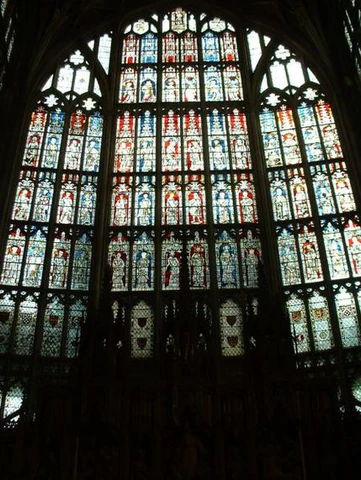Heraldry origins: part 5
Back to articlesEarly examples of evidence of documented heraldry include the great east window of Gloucester Cathedral (image above) which is described as the earliest war memorial in England. It was installed by one of the warriors of Agincourt and contains at the base the coats of arms of some of the fighters who were there in 1415.
Consequently when we say that the use of coats of arms arose in Europe in the 12th century we have to depend on indirect evidence, which fortunately is available. The Bayeux Tapestry is a great aid in this respect. The Tapestry was created in the 11th century, and it shows the process of the Norman Conquest from the period of the latter part of Edward the Confessor’s life until the end of the Battle of Hastings. Contained in this tapestry is valuable contemporary evidence as to the styles of clothes and arms that were used in the period 1060-1066.

French legend maintained the tapestry was commissioned and created by Queen Matilda, William the Conqueror’s wife, and her Ladies-in-waiting. Indeed, in France it is occasionally known as “La Tapisserie de la Reine Mathilde” (Tapestry of Queen Matilda). However, scholarly analysis in the 20th century shows it probably was commissioned by William’s half brother, Bishop Odo. The reasons for the Odo commission theory include: 1) three of the bishop’s followers mentioned in Domesday Book appear on the tapestry; 2) it was found in Bayeux Cathedral, built by Odo; and 3) it may have been commissioned at the same time as the cathedral’s construction in the 1070’s, possibly completed by 1077 in time for display on the cathedral’s dedication.

